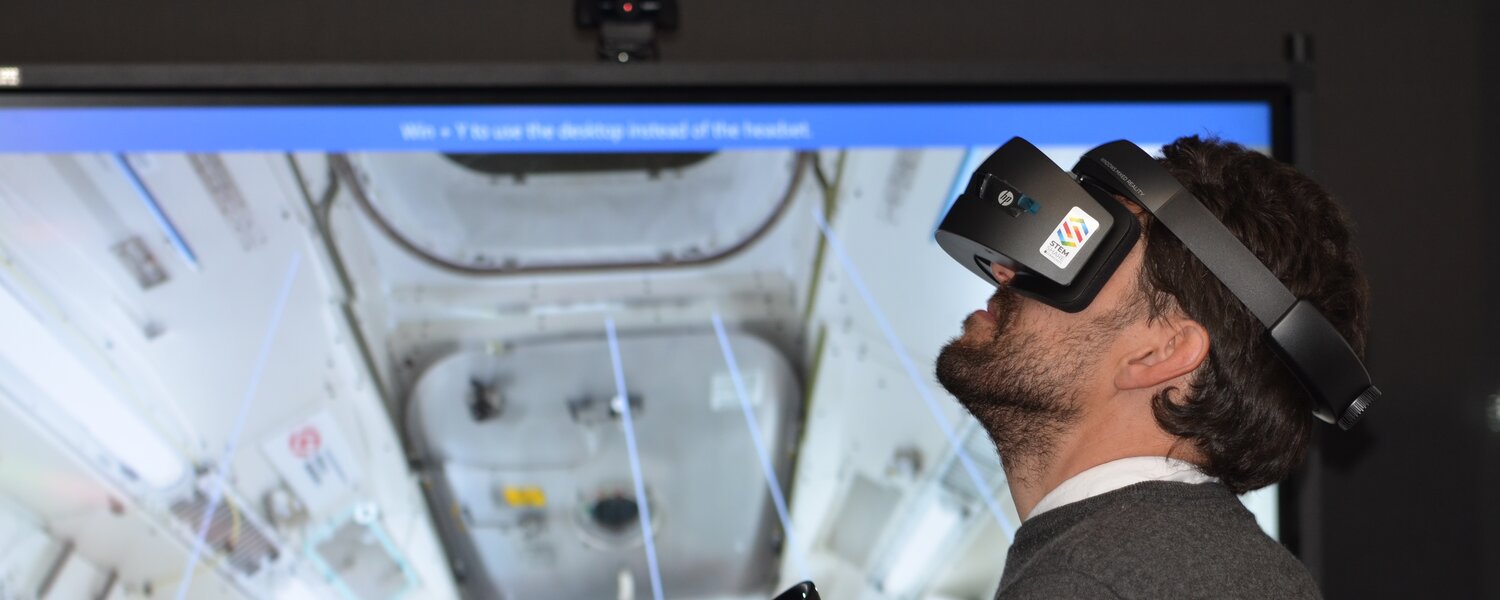Augmented Reality is in the starting blocks for the company of the future

Reading time:
minutes
In 2013, Google made a big splash with Google Glass. Nothing less than a groundbreaking and revolutionary technology was to provide the glasses that would make even the smartphone forget: Augmented reality.
But the dream did not come true. Sales were sluggish, the glasses designed for end consumers became a flop. For a while now, however, Google has been mixing it up on the corporate market with the enterprise version of its glasses. The potential of Augmented Reality was partially recognized there.
The main focus of Augmented Reality is on the environment. A virtual representation is projected into real space. According to Crisp Research, this is an immense advantage over virtual reality: the user never loses touch with reality; dizziness and nausea, which can occur in virtual reality, are not an issue. In addition, the reality reference required for the company is always given. Nevertheless, there are problems with perception: the less realistic the virtual representation is, the lower the acceptance by users, researchers have found out. In addition, many users complain about the narrow field of view of the devices.
There is a reason for the limitation of the representation in augmented reality.
This is because in order to be able to offer a representation that is as close to reality as possible, a high processing capacity is required, as is the ability to reproduce the virtual elements realistically in space when the user moves around. The display devices are becoming more and more powerful and cloud solutions are also being worked on to distribute the processing load.
Application areas of Augmented Reality
Crisp Research has identified at least five main areas of application in which Augmented Reality can be used sensibly. One is in the area of education, training and simulation. Augmented Reality opens up completely new possibilities, from the application in the classroom through interactive learning naps to simulations of emergency situations for training of firefighters.
Another application area is in industry and logistics. For example, Augmented Reality can be used for remote maintenance, in which employees equipped with Augmented Reality are trained by experts who are not on site.
Crisp Research names medicine as a third area of application. This would enable doctors and helpers to keep an eye on patient data at all times. Augmented Reality could even be used in the operating room to improve patient treatment and facilitate interventions with useful and necessary information.
As a kind of graphical user interface, the Augmented Workplace could herald a revolution in the workplace. Employees would be able to access information and data directly without having to take the detour via folder structures or cloud services. As the last important topic for Augmented Reality, Crisp Research presents customer contact. Whether in sales, marketing or trade, augmented reality can contribute to brand presence and can be used as a showcase for products. First pioneers of the technology use Augmented Reality for example as a fashion consultant or furnishing assistant.
Beyond these areas there are of course other fields of application. For example, it could be used for tours and in maps, for example for a visit to a city or museum.
In architecture, construction or real estate, Augmented Reality can be used for visualization. The applicability of the representation in industrial design and product development cannot be denied. And of course it cannot be denied that Augmented Reality also plays a role in the development of video games.
Problem areas of the use of Augmented Reality
In addition to the weaknesses already mentioned above, Augmented Reality is faced with a number of open questions. Augmented Reality applications depend on the processing of large amounts of data to be able to represent virtual objects in real space. The question of data protection is still unresolved. Crisper Research asks how it can be ensured that no personal rights are violated, for example.
Augmented Reality does not only face technical and legal challenges. Above all, management is called upon to ensure the necessary framework conditions for the use of Augmented Reality in endpoint management.
The possible applications of Augmented Reality are as diverse as the challenges that can be derived from its use. Augmented Reality holds an enormous potential for the company of the future. Now it is important to gain a head start in this field by means of first use cases.

